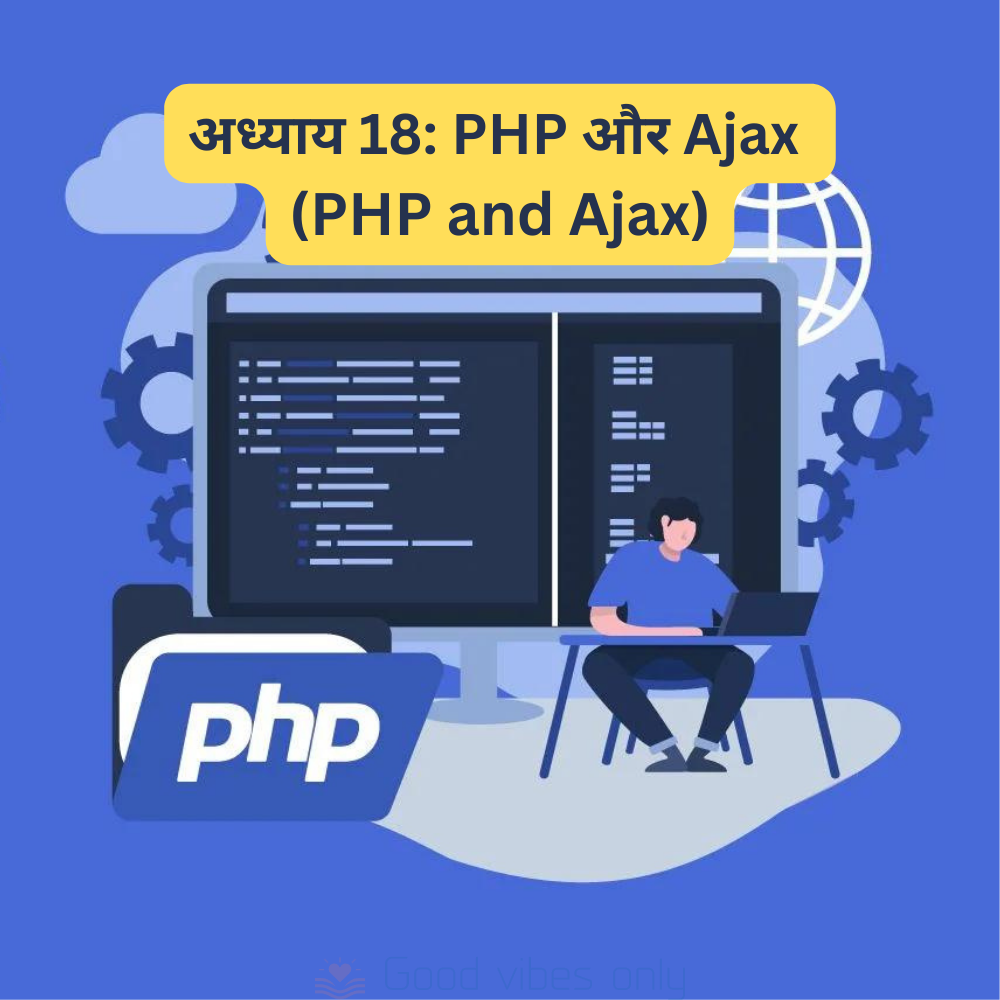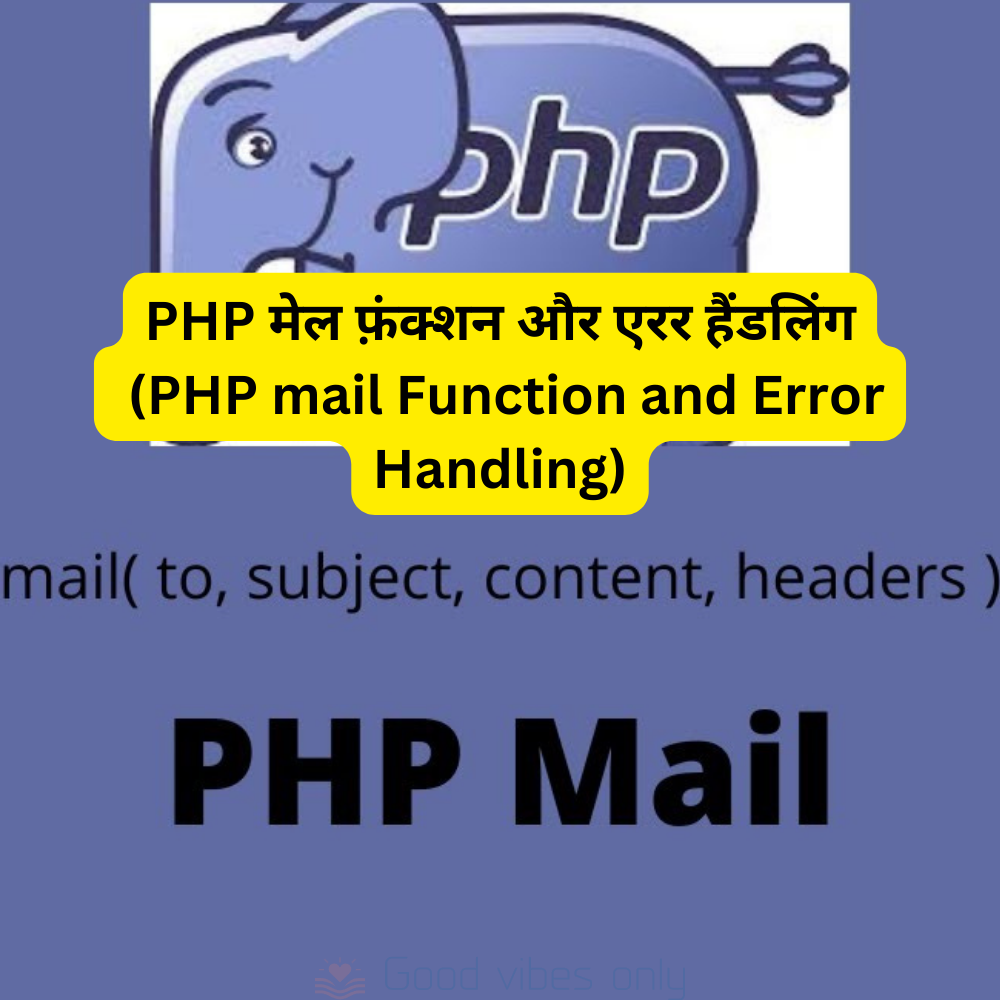PHP (Hypertext Preprocessor) एक लोकप्रिय सर्वर-साइड स्क्रिप्टिंग भाषा है, जिसका उपयोग वेब विकास के लिए किया जाता है। यदि आप PHP डेवलपर के रूप में नौकरी के लिए साक्षात्कार की तैयारी कर रहे हैं, तो आपको कुछ महत्वपूर्ण सवालों और उनके उत्तरों को समझने की ज़रूरत होगी जो अक्सर साक्षात्कार में पूछे जाते हैं। इस ब्लॉग में, हम 5-7 महत्वपूर्ण PHP साक्षात्कार सवालों और उनके उत्तरों पर चर्चा करेंगे, ताकि आप अच्छी तैयारी कर सकें। इन सवालों के उत्तर हिंदी और अंग्रेज़ी दोनों में दिए गए हैं ताकि आपको इन्हें समझने में आसानी हो।
1. PHP क्या है और इसका उपयोग क्यों किया जाता है? (What is PHP and why is it used?)
उत्तर (Answer) – हिंदी में:
PHP एक ओपन-सोर्स सर्वर-साइड स्क्रिप्टिंग भाषा है, जिसका उपयोग डायनामिक वेबसाइट और वेब एप्लिकेशन बनाने के लिए किया जाता है। यह HTML के साथ एम्बेड किया जा सकता है और इसका मुख्य उद्देश्य सर्वर पर स्क्रिप्ट्स को निष्पादित करना है।
Answer in English:
PHP is an open-source server-side scripting language used for creating dynamic websites and web applications. It can be embedded into HTML, and its primary purpose is to execute scripts on the server.
2. PHP में Superglobals क्या होते हैं? (What are Superglobals in PHP?)
उत्तर (Answer) – हिंदी में:
Superglobals PHP में पहले से परिभाषित किए गए कुछ वेरिएबल्स होते हैं जो स्क्रिप्ट में कहीं से भी एक्सेस किए जा सकते हैं। ये PHP में पहले से उपलब्ध होते हैं और प्रमुख Superglobals हैं: $_GET, $_POST, $_SESSION, $_COOKIE, $_FILES, और $_REQUEST।
Answer in English:
Superglobals are predefined variables in PHP that can be accessed from anywhere in the script. These are built-in variables in PHP, and the key Superglobals are: $_GET, $_POST, $_SESSION, $_COOKIE, $_FILES, and $_REQUEST.
3. PHP में Session और Cookie के बीच क्या अंतर है? (What is the difference between Session and Cookie in PHP?)
उत्तर (Answer) – हिंदी में:
Session सर्वर-साइड पर डेटा स्टोर करता है और जब तक यूजर ब्राउज़र बंद नहीं करता या सत्र समाप्त नहीं होता, तब तक वह स्टोर रहता है। वहीं, Cookie क्लाइंट-साइड पर डेटा स्टोर करता है और यह एक फाइल के रूप में यूजर के ब्राउज़र में स्टोर होता है, जो एक्सपायर डेट तक वैध रहता है।
Answer in English:
A session stores data on the server side, and it remains active until the user closes the browser or the session expires. On the other hand, a cookie stores data on the client-side as a file in the user’s browser and is valid until it reaches its expiration date.
4. PHP में GET और POST के बीच क्या अंतर है? (What is the difference between GET and POST in PHP?)
उत्तर (Answer) – हिंदी में:
GET और POST दोनों HTTP विधियां हैं। GET डेटा को URL में भेजता है और इसे क्वेरी स्ट्रिंग के रूप में प्रस्तुत करता है, जिससे यह सुरक्षित नहीं होता। POST डेटा को HTTP हेडर के माध्यम से भेजता है, जो अधिक सुरक्षित होता है और इसका उपयोग डेटा जमा करने के लिए किया जाता है, जो URL में प्रदर्शित नहीं होता।
Answer in English:
GET and POST are both HTTP methods. GET sends data via the URL as a query string, which makes it less secure. POST sends data through the HTTP header, making it more secure, and it’s commonly used for submitting forms where data should not appear in the URL.
5. PHP में include() और require() के बीच क्या अंतर है? (What is the difference between include() and require() in PHP?)
उत्तर (Answer) – हिंदी में:
include() और require() दोनों फ़ाइलों को इम्पोर्ट करने के लिए उपयोग किए जाते हैं। लेकिन यदि require() द्वारा इम्पोर्ट की गई फ़ाइल नहीं मिलती है, तो यह एक फेटल एरर फेंकता है और स्क्रिप्ट को रोक देता है, जबकि include() सिर्फ़ एक वॉर्निंग देता है और स्क्रिप्ट जारी रहती है।
Answer in English:
Both include() and require() are used to import files. However, if the file included using require() is not found, it throws a fatal error and stops the script, whereas include() only throws a warning and the script continues to run.
6. PHP में Traits क्या हैं? (What are Traits in PHP?)
उत्तर (Answer) – हिंदी में:
Traits PHP में एक विशेषता होती हैं जो कोड का पुन: उपयोग करने में मदद करती हैं। Traits के माध्यम से आप एक ही फ़ंक्शनलिटी को विभिन्न क्लासेस में साझा कर सकते हैं। Traits का उपयोग तब किया जाता है जब कोई क्लास बहु-अवरोधक (multiple inheritance) का समर्थन नहीं करती।
Answer in English:
Traits in PHP are a mechanism for code reuse. With traits, you can share the same functionality across different classes. Traits are used when a class does not support multiple inheritance but needs to reuse code across multiple classes.
7. PHP में Error Types कितने होते हैं? (What are the types of errors in PHP?)
उत्तर (Answer) – हिंदी में:
PHP में चार प्रमुख प्रकार की एरर होती हैं:
- Parse Error (सिंटैक्स एरर)
- Fatal Error (स्क्रिप्ट स्टॉप हो जाता है)
- Warning (एरर दिखाता है लेकिन स्क्रिप्ट चलता रहता है)
- Notice (छोटे एरर जो स्क्रिप्ट को प्रभावित नहीं करते)
Answer in English:
There are four main types of errors in PHP:
- Parse Error (Syntax error)
- Fatal Error (Stops script execution)
- Warning (Displays an error but continues script execution)
- Notice (Minor errors that don’t affect script execution)
How does PHP handle sessions, and what are some best practices for session management?
उत्तर (Answer) – हिंदी में:
PHP सत्र प्रबंधन:
PHP सत्र का उपयोग एक यूजर के डेटा को कई पेज अनुरोधों के बीच स्टोर करने के लिए किया जाता है। जब session_start() फ़ंक्शन को कॉल किया जाता है, तो PHP या तो मौजूदा सत्र को फिर से शुरू करता है या एक नया सत्र ID उत्पन्न करता है, जो आमतौर पर क्लाइंट साइड पर कुकी (जैसे, PHPSESSID) में स्टोर होता है। सत्र डेटा सर्वर पर स्टोर होता है और इसे $_SESSION सुपरग्लोबल ऐरे के माध्यम से एक्सेस किया जा सकता है।
उदाहरण के लिए, सत्र शुरू करने के बाद आप डेटा स्टोर कर सकते हैं:
session_start(); $_SESSION['user_id'] = 123; // उपयोगकर्ता ID सत्र में स्टोर की जा रही है
बाद में, आप इस सत्र डेटा को एक्सेस कर सकते हैं:
echo $_SESSION['user_id']; // आउटपुट: 123
सत्र तब तक सक्रिय रहता है जब तक उपयोगकर्ता वेबसाइट पर सक्रिय रहता है, या जब तक सत्र समाप्त नहीं हो जाता या इसे session_destroy() के माध्यम से मैन्युअल रूप से समाप्त नहीं किया जाता।
Answer in English:
PHP Session Handling:
PHP manages sessions by storing user-specific information across multiple page requests. When a session starts using session_start(), PHP either resumes an existing session or generates a new one with a unique session ID, typically stored in a cookie (PHPSESSID) on the client side. The session data, however, is stored on the server, which is accessible via the $_SESSION superglobal array.
For example, after starting a session, you can store data like a user’s login status:
session_start(); $_SESSION['user_id'] = 123; // Storing user ID in session
Later, you can retrieve this session data:
echo $_SESSION['user_id']; // Output: 123
Sessions remain active as long as the user interacts with the application or until they expire or are destroyed using session_destroy().
Explain the differences between PHP 7 and PHP 8. What are some key features introduced in PHP 8?
उत्तर (Answer) – हिंदी में:
PHP 8 ने PHP 7 की तुलना में कई महत्वपूर्ण बदलाव और सुधार पेश किए हैं, जिनमें प्रदर्शन में सुधार, नई सुविधाओं का समावेश और कुछ पुराने फीचर्स को अपडेट या हटाया गया है। आइए PHP 7 और PHP 8 के बीच कुछ प्रमुख अंतर देखें:
- JIT (Just-In-Time) कंपाइलर:
- PHP 7: PHP 7 में Zend Engine 3 के साथ प्रदर्शन में सुधार किया गया था, लेकिन JIT कंपाइलर नहीं था।
- PHP 8: PHP 8 ने JIT (Just-In-Time) कंपाइलर पेश किया, जो कोड को रनटाइम पर कंपाइल करता है, जिससे विशेष रूप से CPU-इंटेंसिव कार्यों के लिए प्रदर्शन में सुधार होता है। हालांकि, हर PHP एप्लिकेशन इससे लाभ नहीं देखता।
English:
- PHP 7: PHP 7 brought performance improvements with the Zend Engine 3 but did not have JIT.
- PHP 8: PHP 8 introduced JIT (Just-In-Time) compilation, compiling code at runtime for performance boosts, particularly in CPU-heavy tasks.
- Union Types:
- PHP 7: PHP 7 में यूनियन टाइप्स का सपोर्ट नहीं था, यानी कि एक ही पैरामीटर या रिटर्न वैल्यू के लिए एक से अधिक प्रकार निर्दिष्ट नहीं कर सकते थे।
- PHP 8: PHP 8 में यूनियन टाइप्स पेश किए गए हैं, जो पैरामीटर और रिटर्न टाइप के लिए एक से अधिक प्रकार स्वीकार कर सकते हैं।
function foo(int|float $num) { return $num; }
Explain the differences between PHP 7 and PHP 8. What are some key features introduced in PHP 8?
उत्तर (Answer) – हिंदी में:
PHP 7 और PHP 8 के बीच कई महत्वपूर्ण अंतर हैं, और PHP 8 ने कई नए फीचर्स पेश किए हैं जो PHP को अधिक सक्षम और उपयोगकर्ता अनुकूल बनाते हैं। यहां कुछ प्रमुख अंतर और PHP 8 में पेश किए गए नए फीचर्स का विवरण दिया गया है:
- JIT (Just-In-Time) कंपाइलर:
PHP 8 ने JIT (Just-In-Time) कंपाइलर पेश किया है, जो रनटाइम पर कोड को कंपाइल करता है और विशेष रूप से CPU-इंटेंसिव कार्यों के लिए प्रदर्शन को बेहतर बनाता है। PHP 7 में यह सुविधा नहीं थी। - Union Types:
PHP 8 में Union Types का फीचर दिया गया है, जिससे पैरामीटर या रिटर्न वैल्यू में एक से अधिक प्रकार को स्वीकार किया जा सकता है। PHP 7 में यह सुविधा नहीं थी। - Named Arguments:
PHP 8 में Named Arguments फीचर शामिल है, जो आपको आर्ग्युमेंट्स को नाम के साथ पास करने की सुविधा देता है। इस फीचर से आप आर्ग्युमेंट्स को उसी क्रम में पास करने की आवश्यकता को समाप्त कर सकते हैं जैसा कि PHP 7 में होता था। - Nullsafe Operator:
PHP 8 ने Nullsafe Operator (?->) पेश किया है, जो नल (null) ऑब्जेक्ट्स के साथ सुरक्षित तरीके से काम करने की अनुमति देता है। PHP 7 में इसे संभालने का कोई डायरेक्ट तरीका नहीं था। - Match Expression:
PHP 8 में Match Expression पेश किया गया है, जोswitchकी तरह है लेकिन यह वैल्यू रिटर्न करता है और टाइप की सख्त तुलना करता है। PHP 7 में सिर्फ़switchस्टेटमेंट था, जो वैल्यू रिटर्न नहीं करता था। - Attributes (Annotations):
PHP 8 में Attributes की सुविधा जोड़ी गई है, जिससे आप सीधे क्लास, फंक्शन या प्रॉपर्टीज पर मेटाडेटा जोड़ सकते हैं। PHP 7 में इसके लिए थर्ड पार्टी टूल्स की ज़रूरत थी।
Answer in English:
There are several key differences between PHP 7 and PHP 8, and PHP 8 introduced several new features that make PHP more powerful and user-friendly. Here’s a detailed breakdown of the main differences and new features introduced in PHP 8:
- JIT (Just-In-Time) Compiler:
PHP 8 introduced the JIT (Just-In-Time) compiler, which compiles code at runtime, providing performance improvements, especially in CPU-intensive tasks. PHP 7 did not have this feature. - Union Types:
PHP 8 introduced Union Types, allowing parameters or return values to accept more than one data type. This feature was not available in PHP 7. - Named Arguments:
PHP 8 includes the Named Arguments feature, which allows you to pass arguments by their names, removing the need to pass them in the exact order as defined in the function signature, as was required in PHP 7. - Nullsafe Operator:
PHP 8 introduced the Nullsafe Operator (?->), which allows you to work safely withnullobjects. PHP 7 did not have a direct way to handle this. - Match Expression:
PHP 8 introduced the Match Expression, which is similar toswitchbut returns a value and supports strict type comparisons. In PHP 7, there was only theswitchstatement, which does not return a value. - Attributes (Annotations):
PHP 8 introduced Attributes, allowing metadata to be added directly to classes, functions, or properties. In PHP 7, third-party tools were required for annotations.
What are Traits in PHP, and how do they differ from interfaces and abstract classes?
उत्तर (Answer) – हिंदी में:
Traits PHP में एक विशेषता (फीचर) है, जो कोड पुन: उपयोग (code reuse) को आसान बनाता है। जब कोई क्लास बहु-अवरोधन (multiple inheritance) का समर्थन नहीं करती है और कोड को अलग-अलग क्लासों में साझा करने की आवश्यकता होती है, तो Traits का उपयोग किया जाता है। Traits आपको एक ही कोड ब्लॉक को विभिन्न क्लासों में सम्मिलित करने की सुविधा देता है, जिससे कोड को पुन: लिखने की ज़रूरत नहीं होती।
Traits को trait कीवर्ड का उपयोग करके परिभाषित किया जाता है और use कीवर्ड का उपयोग करके क्लास में जोड़ा जाता है।
उदाहरण:
trait Logger {
public function log($message) {
echo $message;
}
}
class User {
use Logger;
}
class Product {
use Logger;
}
$user = new User();
$user->log('User logged in'); // Output: User logged in
$product = new Product();
$product->log('Product created'); // Output: Product created
Traits और Interfaces/Abstract Classes में अंतर:
- Traits: Traits में आप methods की पूरी बॉडी को परिभाषित कर सकते हैं और इन्हें क्लास में शामिल कर सकते हैं, जिससे एक कोड ब्लॉक को बार-बार लिखने से बचा जा सकता है। Traits बहु-अवरोधन की कमी को पूरा करते हैं, लेकिन Traits का कोई स्वतंत्र अस्तित्व नहीं होता है; इन्हें केवल क्लास के साथ इस्तेमाल किया जा सकता है।
- Interfaces: Interface में methods की केवल घोषणा होती है, बॉडी नहीं। Interface यह तय करता है कि कौन-सी methods क्लास में होनी चाहिए, लेकिन उनके कार्यान्वयन (implementation) को नहीं परिभाषित करता। Interface को क्लास में implement किया जाता है, और वह क्लास उन methods को implement करने के लिए बाध्य होती है।
- Abstract Classes: Abstract Classes एक क्लास होती है जिसमें methods की घोषणा होती है, और कुछ methods के कार्यान्वयन भी होते हैं। इसका उद्देश्य आंशिक कार्यान्वयन देना और subclasses को इसे विस्तारित (extend) करने के लिए मजबूर करना होता है। आप इसमें आंशिक रूप से methods की बॉडी दे सकते हैं, और कुछ methods को abstract छोड़ सकते हैं ताकि subclasses उन्हें implement करें।
Answer in English:
Traits in PHP are a mechanism for code reuse that allows developers to include methods from a trait into multiple classes. Traits help to overcome the limitations of single inheritance, allowing code to be reused across different classes without requiring those classes to share a common parent. This feature helps reduce code duplication.
Traits are defined using the trait keyword and are incorporated into a class using the use keyword.
Example:
trait Logger {
public function log($message) {
echo $message;
}
}
class User {
use Logger;
}
class Product {
use Logger;
}
$user = new User();
$user->log('User logged in'); // Output: User logged in
$product = new Product();
$product->log('Product created'); // Output: Product created
Differences Between Traits, Interfaces, and Abstract Classes:
- Traits: Traits allow the definition of fully implemented methods, which can be included in multiple classes, helping to avoid code duplication. Unlike inheritance, traits don’t force a class hierarchy. However, traits cannot be instantiated on their own; they must be used within a class.
- Interfaces: Interfaces define only method signatures, not the implementation. An interface sets a contract that any implementing class must fulfill by providing the body for the methods declared in the interface. The class implementing the interface must define all the methods specified in the interface.
- Abstract Classes: Abstract classes can contain both method declarations (like interfaces) and method implementations. They are used to provide partial implementations of functionality, and the classes extending the abstract class are required to implement any abstract methods. Abstract classes can have properties, constants, and fully implemented methods, but they cannot be instantiated directly.
How would you optimize a slow PHP application? Describe your approach to performance tuning.
उत्तर (Answer) – हिंदी में:
PHP एप्लिकेशन को तेज़ करने के लिए प्रदर्शन ट्यूनिंग एक महत्वपूर्ण प्रक्रिया है। एक धीमे PHP एप्लिकेशन को अनुकूलित करने के लिए निम्नलिखित चरणों का पालन किया जा सकता है:
- कोड प्रोफाइलिंग और बॉटलनेक्स की पहचान:
सबसे पहले, एप्लिकेशन के उन हिस्सों की पहचान करना ज़रूरी है जो सबसे ज्यादा समय लेते हैं। इसके लिए आप प्रोफाइलिंग टूल्स जैसे Xdebug, Blackfire, या Tideways का उपयोग कर सकते हैं। ये टूल्स आपको यह जानकारी देते हैं कि कौन-से फ़ंक्शन या स्क्रिप्ट सबसे ज्यादा CPU समय ले रहे हैं। - क्वेरी ऑप्टिमाइज़ेशन:
अक्सर धीमे PHP एप्लिकेशन का कारण खराब डेटाबेस क्वेरीज़ होती हैं। SQL क्वेरीज़ को ऑप्टिमाइज़ करें, इंडेक्सिंग का सही तरीके से उपयोग करें, और कोशिश करें कि जटिल क्वेरीज़ को कम किया जाए। अगर संभव हो, तोEXPLAINका उपयोग करें ताकि आप समझ सकें कि क्वेरी किस प्रकार काम कर रही है। - कैशिंग का उपयोग करें:
PHP में कैशिंग तकनीक का उपयोग करके आप एप्लिकेशन की गति बढ़ा सकते हैं। आप OPcache का उपयोग कर सकते हैं ताकि PHP स्क्रिप्ट्स को बार-बार कंपाइल करने की ज़रूरत न हो। इसके अलावा, डेटा कैशिंग के लिए Memcached या Redis का उपयोग करें, जिससे डेटाबेस को बार-बार क्वेरी करने की आवश्यकता न हो। - कंटेंट डिलीवरी नेटवर्क (CDN):
अगर आपकी वेबसाइट में बहुत सारी स्टैटिक फाइलें (जैसे कि इमेजेज, CSS, JavaScript) हैं, तो उन्हें CDN के माध्यम से सर्व करें। इससे फाइलें यूज़र के करीब स्थित सर्वर से डिलीवर होंगी, जिससे लोडिंग टाइम कम होता है। - सही डेटा स्ट्रक्चर और एल्गोरिदम का उपयोग:
डेटा प्रोसेसिंग के दौरान सही डेटा स्ट्रक्चर और एल्गोरिदम का उपयोग करें। ओवरहेड कम करने के लिए फ़ंक्शन और लूप्स को सरल और तेज़ बनाए रखें। बड़ी मात्रा में डेटा को प्रोसेस करते समयforeachजैसे लूप्स की जगहarray_map,array_filterजैसे फ़ंक्शनल प्रोग्रामिंग कॉन्सेप्ट का उपयोग करना अधिक प्रभावी हो सकता है। - कुशल फाइल हैंडलिंग:
बार-बार फाइलों को पढ़ने और लिखने से प्रदर्शन पर असर पड़ सकता है। अगर एप्लिकेशन को फाइल सिस्टम पर बहुत ज्यादा निर्भरता है, तो I/O ऑपरेशंस को सीमित करने के लिए आप कैशिंग या इन-मेमोरी डेटा स्ट्रक्चर का उपयोग कर सकते हैं। - सर्वर कॉन्फ़िगरेशन अनुकूलन:
PHP के प्रदर्शन को बेहतर बनाने के लिए, आप सर्वर सेटिंग्स को ऑप्टिमाइज़ कर सकते हैं। PHP-FPM (FastCGI Process Manager) का उपयोग करें, जिससे PHP स्क्रिप्ट्स की प्रोसेसिंग तेज हो जाती है। - अप्रचलित कोड को हटाएं:
एप्लिकेशन में अप्रचलित या अनावश्यक कोड को साफ करें। कोड की अधिकता से न केवल एप्लिकेशन धीमा होता है, बल्कि उसे बनाए रखना भी मुश्किल हो जाता है।
Answer in English:
Optimizing a slow PHP application involves several steps and techniques aimed at identifying bottlenecks and enhancing the performance of the application. Below is a structured approach to performance tuning:
- Code Profiling and Identifying Bottlenecks:
The first step is to identify the parts of the application that are consuming the most time. Tools like Xdebug, Blackfire, or Tideways can be used for profiling. These tools provide insights into which functions or scripts are taking the most CPU time. - Query Optimization:
Often, slow PHP applications are a result of inefficient database queries. Optimize SQL queries, use proper indexing, and try to reduce complex queries. If possible, useEXPLAINto understand how the queries are being executed and to find potential optimizations. - Implement Caching:
Caching is a critical technique to improve the speed of PHP applications. Use OPcache to store precompiled PHP scripts, so they don’t need to be recompiled with every request. Also, use Memcached or Redis for data caching to avoid querying the database repeatedly. - Use a Content Delivery Network (CDN):
If your website serves a lot of static files (like images, CSS, JavaScript), deliver them via a CDN. This reduces the load time as files are served from a server closest to the user’s location. - Use Efficient Data Structures and Algorithms:
Ensure you are using the right data structures and algorithms when processing data. Keep functions and loops as simple and efficient as possible. For large datasets, consider using functional programming concepts likearray_mapandarray_filterinstead of traditional loops likeforeach. - Efficient File Handling:
Frequent file reads and writes can degrade performance. If the application relies heavily on file system operations, use caching or in-memory data structures to minimize the I/O operations. - Optimize Server Configuration:
Optimize server settings to improve PHP performance. For instance, using PHP-FPM (FastCGI Process Manager) can speed up PHP script execution. You should also configure memory limits, execution times, and other server parameters based on the application’s needs. - Remove Deprecated or Unnecessary Code:
Clean up obsolete or redundant code in the application. Excessive or outdated code not only slows down the application but also makes it harder to maintain.
What are Closures in PHP, and how can they be useful in practical scenarios?
उत्तर (Answer) – हिंदी में:
Closures PHP में अनाम (anonymous) फ़ंक्शंस होते हैं, जिन्हें वेरिएबल में स्टोर किया जा सकता है, पैरामीटर के रूप में पास किया जा सकता है, और एक फ़ंक्शन के रूप में कॉल किया जा सकता है। Closures एक फ़ंक्शन के अंदर की गई डिफ़ाइन की गई फ़ंक्शंस होती हैं जो उस फ़ंक्शन के वातावरण से वेरिएबल को कैप्चर कर सकती हैं जिसमें वे बनाई गई होती हैं। यह सुविधा आपको फ़ंक्शन को अधिक गतिशील और लचीला बनाती है।
Closures का उपयोग तब होता है जब आपको एक फ़ंक्शन की आवश्यकता होती है जिसे बाद में निष्पादित किया जा सकता है या जो किसी अन्य फ़ंक्शन को डेटा के रूप में पास किया जा सकता है। Closures को use कीवर्ड का उपयोग करके उस वातावरण से वेरिएबल्स को पकड़ने के लिए डिज़ाइन किया जाता है जिसमें वे बनाए जाते हैं।
उदाहरण:
$message = 'Hello, ';
$closure = function ($name) use ($message) {
return $message . $name;
};
echo $closure('John'); // आउटपुट: Hello, John
यहाँ, $message क्लोज़र के बाहरी दायरे में है, लेकिन use ($message) के साथ इसे कैप्चर किया जा रहा है और closure फ़ंक्शन के भीतर इस्तेमाल किया जा रहा है। यह PHP में डेटा को “क्लोज” करने का एक तरीका है, ताकि उस डेटा को कहीं भी और किसी भी समय उपयोग किया जा सके।
Practical Uses of Closures:
- Callback Functions:
Closures का उपयोग अक्सर कॉलबैक फ़ंक्शंस के रूप में किया जाता है, जहां आपको एक फ़ंक्शन को पैरामीटर के रूप में पास करना होता है। उदाहरण के लिए, array functions (array_map,array_filter) में इसका उपयोग किया जा सकता है। - Dependency Injection:
Closures का उपयोग डेपेंडेंसी इंजेक्शन के लिए भी किया जा सकता है, जहां एक क्लास को अपनी निर्भरताओं को उसी समय तय करना होता है जब क्लास को इनिशियलाइज किया जाता है। इससे प्रोग्राम अधिक मॉड्यूलर और परीक्षण योग्य बनता है। - Anonymous Functions in Event Handlers:
इवेंट आधारित प्रोग्रामिंग में, Closures का उपयोग इवेंट हैंडलर के रूप में किया जाता है, जिससे आपको इवेंट के ट्रिगर होने पर तुरंत एक्शन लेने का मौका मिलता है।
Answer in English:
Closures in PHP are anonymous functions that can be stored in variables, passed as parameters, and invoked later. Closures are essentially functions that capture the environment in which they are created, allowing them to access variables from their parent scope. This feature makes functions more dynamic and flexible.
Closures are useful when you need a function that can be executed at a later time or passed as data to another function. Closures use the use keyword to capture variables from the environment in which they are defined.
Example:
$message = 'Hello, ';
$closure = function ($name) use ($message) {
return $message . $name;
};
echo $closure('John'); // Output: Hello, John
Here, $message is in the outer scope of the closure, but it is captured and used within the closure function via the use ($message) statement. This allows the data to be “closed” within the function, making it available wherever the closure is used.
Practical Uses of Closures:
- Callback Functions:
Closures are often used as callback functions, where you need to pass a function as a parameter. For example, they are commonly used in array functions likearray_maporarray_filter. - Dependency Injection:
Closures can be used for dependency injection, where a class’s dependencies are defined at the time of initialization, making the program more modular and testable. - Anonymous Functions in Event Handlers:
In event-driven programming, closures can be used as event handlers, allowing you to take immediate action when an event is triggered.
Explain the concept of namespaces in PHP. How do they help in organizing code?
उत्तर (Answer) – हिंदी में:
Namespaces PHP में एक फीचर है जिसका उपयोग कोड को बेहतर तरीके से व्यवस्थित करने और नामकरण संघर्षों (naming conflicts) को हल करने के लिए किया जाता है। जब बड़े प्रोजेक्ट्स में एक ही नाम के क्लासेस, फ़ंक्शंस, या वेरिएबल्स हो जाते हैं, तो namespaces का उपयोग उन्हें अलग-अलग समूहों में बांटने के लिए किया जाता है। यह प्रोजेक्ट के विभिन्न हिस्सों में एक ही नाम के क्लास या फ़ंक्शन के उपयोग से होने वाले टकराव को रोकता है।
PHP में एक namespace को namespace कीवर्ड का उपयोग करके परिभाषित किया जाता है, और एक ही फ़ाइल में कई namespaces हो सकते हैं।
उदाहरण:
namespace MyApp\Controllers;
class User {
public function getName() {
return "User from Controllers";
}
}
namespace MyApp\Models;
class User {
public function getName() {
return "User from Models";
}
}
ऊपर दिए गए उदाहरण में, हमने दो अलग-अलग namespaces (MyApp\Controllers और MyApp\Models) बनाए हैं और दोनों में User नाम की क्लास बनाई है। अगर namespaces का उपयोग न किया गया होता, तो एक ही नाम की क्लास होने से टकराव होता।
Namespaces का उपयोग करते समय क्लासेस को एक्सेस करना:
Namespaces का उपयोग करके किसी क्लास को एक्सेस करने के लिए, हम फुली क्वालिफाइड नाम (fully qualified name) का उपयोग करते हैं। उदाहरण:
$controllerUser = new \MyApp\Controllers\User(); $modelUser = new \MyApp\Models\User();
amespaces के लाभ:
- नामकरण टकराव से बचाव:
Namespaces एक ही नाम के क्लास, फ़ंक्शन, या वेरिएबल्स के उपयोग से होने वाले नामकरण टकराव को रोकने में मदद करते हैं। यह विशेष रूप से बड़े प्रोजेक्ट्स और लाइब्रेरीज़ में महत्वपूर्ण है। - कोड का बेहतर संगठन:
Namespaces के माध्यम से आप क्लासेस और फ़ंक्शंस को लॉजिकल ग्रुप्स में विभाजित कर सकते हैं। इससे कोड को समझना और मैनेज करना आसान हो जाता है। - बड़ी परियोजनाओं के लिए सहायक:
Namespaces का उपयोग बड़े प्रोजेक्ट्स में किया जाता है ताकि विभिन्न मॉड्यूल्स और लाइब्रेरीज़ को अलग रखा जा सके। यह प्रोजेक्ट के विकास और रखरखाव को सरल बनाता है। - थर्ड-पार्टी लाइब्रेरीज़ के साथ बेहतर संगतता:
Namespaces के माध्यम से थर्ड-पार्टी लाइब्रेरीज़ को आसानी से प्रोजेक्ट में इंटीग्रेट किया जा सकता है, बिना नामकरण टकराव की चिंता किए।
Answer in English:
Namespaces in PHP are a feature that helps in organizing code and resolving naming conflicts. When working on large projects, you may have classes, functions, or variables with the same name. Namespaces allow you to group these into different logical blocks to avoid conflicts and keep the code more organized.
A namespace in PHP is defined using the namespace keyword, and a single file can have multiple namespaces.
Example:
namespace MyApp\Controllers;
class User {
public function getName() {
return "User from Controllers";
}
}
namespace MyApp\Models;
class User {
public function getName() {
return "User from Models";
}
}
In this example, we have created two different namespaces (MyApp\Controllers and MyApp\Models) and defined a User class in each. Without namespaces, there would be a conflict due to both classes having the same name.
Accessing Classes with Namespaces:
To access classes defined in namespaces, we use the fully qualified name. Example:
$controllerUser = new \MyApp\Controllers\User(); $modelUser = new \MyApp\Models\User();
Benefits of Namespaces:
- Avoid Naming Conflicts:
Namespaces help prevent naming conflicts that occur when multiple classes, functions, or variables have the same name. This is particularly important in large projects and libraries. - Better Code Organization:
Namespaces allow you to group classes and functions into logical structures. This makes the code easier to understand and manage. - Ideal for Large Projects:
Namespaces are commonly used in large projects to separate different modules and libraries. This simplifies the development and maintenance of the project. - Compatibility with Third-Party Libraries:
Namespaces make it easier to integrate third-party libraries into your project without worrying about naming conflicts.
PHP साक्षात्कार में सफल होने के लिए आपको न केवल भाषा की अच्छी समझ होनी चाहिए बल्कि इसके महत्वपूर्ण सिद्धांतों और उनके उपयोग पर भी ध्यान देना होगा। ऊपर दिए गए सवाल और जवाब PHP साक्षात्कार में अक्सर पूछे जाते हैं। इनका अभ्यास करने से आप अपनी साक्षात्कार की तैयारी को बेहतर कर सकते हैं। ध्यान रखें कि तकनीकी ज्ञान के साथ-साथ व्यावहारिक परियोजनाओं पर काम करने से भी आपका आत्मविश्वास बढ़ता है।
Happy Coding!




